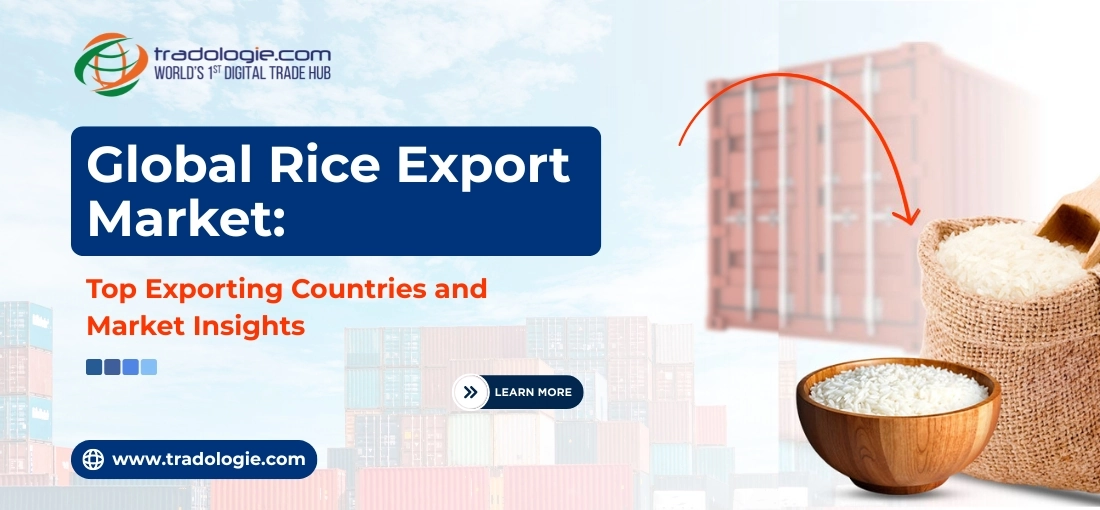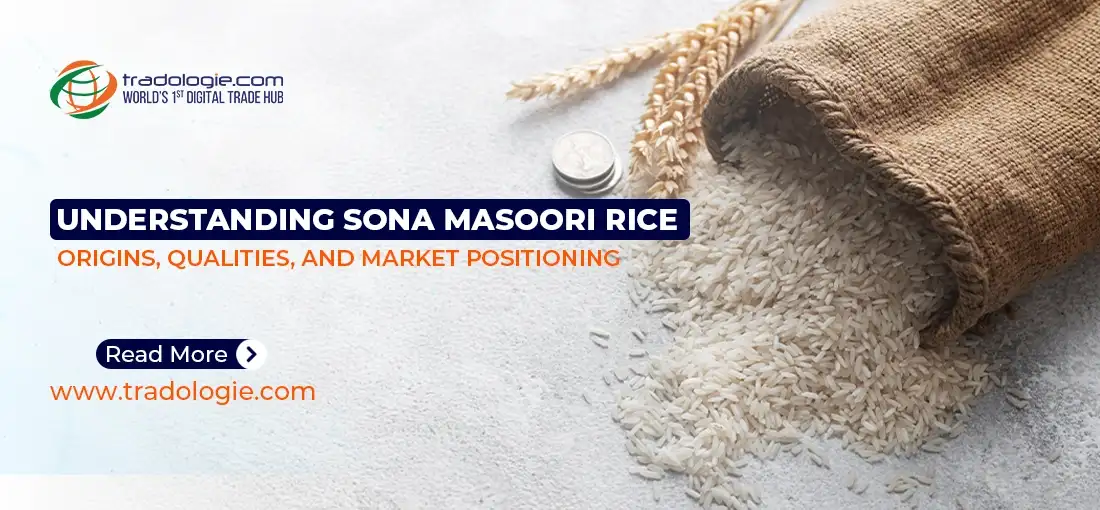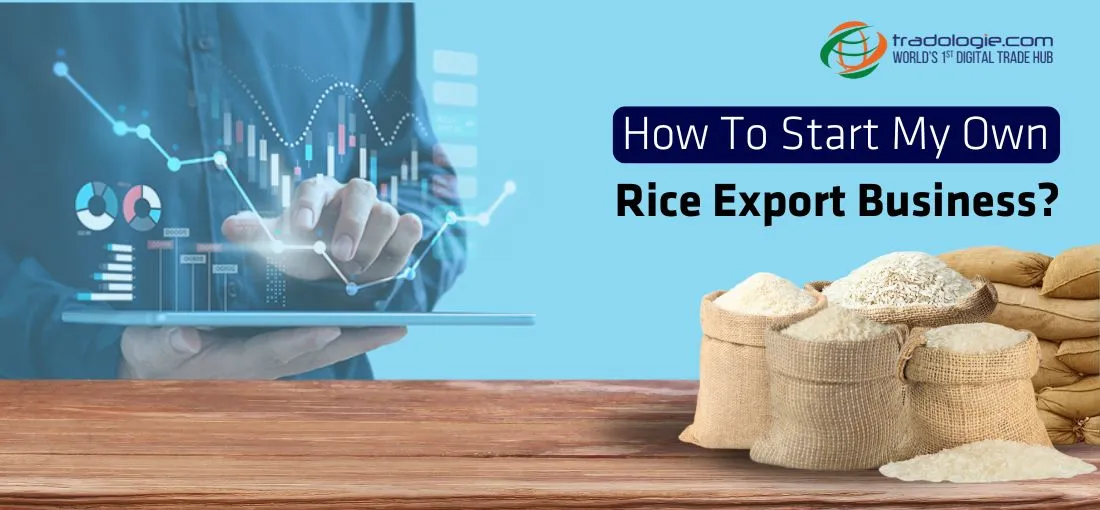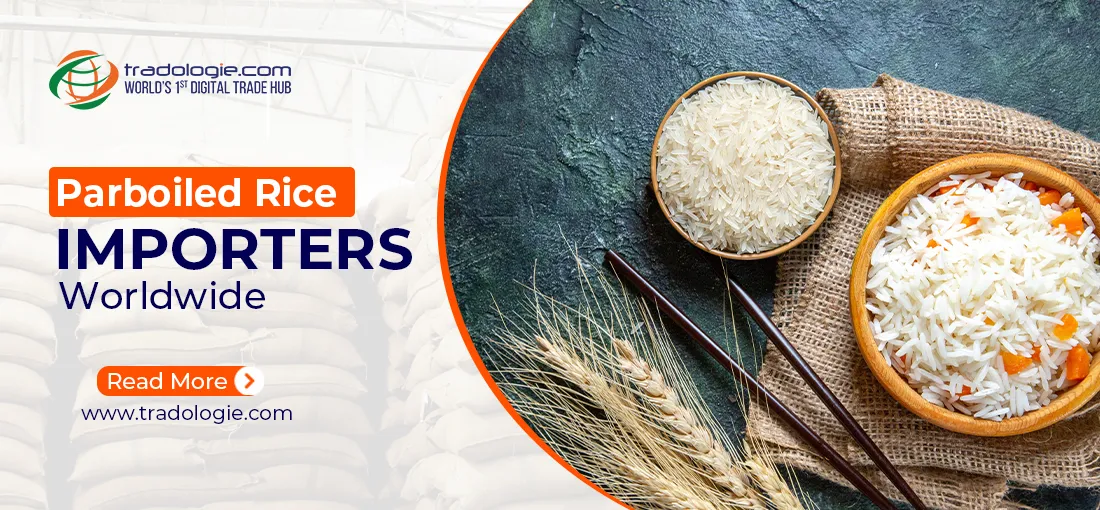Global Rice Export Market: Top Exporting Countries and Market Insights
As someone rightly said, give a bowl of rice to a man and you will feed him for the day. Rice is one of those wholesome cereals that are rich in carbohydrates, which are the body's primary source of energy. This highly valuable food commodity commanded a massive 34.2 billion of global trade in 2023.
There are a few players that are among the biggest cultivators and bulk rice exporters globally. Similarly, the market has also witnessed significant developments in terms of production.
This informative blog piece will provide all the details pertaining to the same in detail. So, let us get the ball rolling.
India: Structuring Global Supply Chains
India, as the world's largest rice exporter (USD 11.4 billion in 2023), retains dominance across basmati and non-basmati shipments. Rice exporters from India cater to bulk rice buyers across Saudi Arabia, Iran, Iraq, UAE, USA, and Yemen for basmati grades. At the same time, Benin, Guinea, Togo, Côte d'Ivoire, and Vietnam are consistent destinations for non-basmati shipments.
In recent times, India's easing of non-basmati restrictions has recalibrated contracting cycles for African buyers. Merchant rice exporters have resumed volume bookings, aligning shipment timelines with demands in West Africa, while ensuring price discipline amidst currency fluctuations. For institutional buyers, India’s integrated milling and grading infrastructure, like always, offers access to export-grade rice across multiple SKUs with aligned quality parameters.
Thailand: Premium Jasmine Focus with Structured Pricing
Thailand, with USD 5.3 billion in rice exports, is a significant global player both in premium Jasmine rice, white rice and parboiled rice shipments, with the USA, Indonesia, South Africa, and Iraq among its top importers. Thai Jasmine's aroma and cooking properties allow it to command shelf premiums in QSR and retail packaging.
The recent stabilisation in the rainfall pattern in this tropical country has significantly improved the paddy output. This has enabled Thai rice exporters to formally embark on the forward contracts for Quarter 3 in 2025. The buyers are also expected to witness ease of procurement with ample supplies.
Vietnam: Cost-Competitive, Quality-Aligned Shipments
Vietnam's USD 3.88 billion rice export portfolio positions it as a credible alternative for institutional buyers prioritizing competitive pricing while maintaining quality thresholds. Vietnam's suppliers have moved to secure forward contracts, especially with Middle Eastern and Asian buyers building Q3 inventory.
A marginal reduction in FOB pricing, coupled with consistent quality, has made Vietnam a pragmatic option for rice buyers seeking blended procurement strategies across premium and standard rice SKUs.
Pakistan: Specialized Aromatic Supply
Pakistan is not a significant, but a considerable player in the global rice trade market. Its annual shipments touch worth USD 2.47 billion. This small country, by land mass, also focuses on exporting both basmati and non-basmati rice. Pakistani rice exporters have a reasonable presence in the Gulf countries and position themselves as nice suppliers. However, when it comes to basmati rice varieties, it does not lie anywhere close to India.
Recent Industry Developments:
The global rice market is experiencing a considerable surge. The rice supplies for the year 2024-2025 are now projected to witness a record growth of 715.3 million tonnes. This figure is up from the previous estimate. It exquisitely marks a year-on-year increase of 12.3 million tonnes. This spells out a greater volume for bulk rice importers and better options to structure forward contracts in the market.
Japan's Rice Imports Surge
Japan's private-sector rice imports rose sharply to approximately 10,600 tonnes in May 2025, up from around 3,000 tonnes last year. This surge follows poor domestic harvests, earthquake-related disruptions, and a tourism rebound boosting internal demand. Despite high tariff structures, demand for U.S. rice continues to expand, with the government advancing tariff-free tendering and releasing strategic reserves to stabilize local markets.
Thailand Expands Exports to China
As emphasised by Thai Minister of Commerce Pichai, Thailand has prioritised rice and cassava exports in its trade strategy with China. It is worth noting that between January and April 2025, Thailand exported 202,889 tonnes of rice to China, a 77.7% increase over the same period in 2024. Export value rose to USD 108.9 million, which means a 31.3% year-on-year growth and reflects China’s import diversification and is also in sync with Thailand’s goals to strengthen its agro-exports in Asia.
Conclusion
The global rice markets are consistently witnessing disciplined growth as per the projections. The growth is mainly driven by all-time global players like India, Thailand, Vietnam, and Pakistan. Keeping a firm track of the market's situation is paramount for bulk rice importers despite the rice market showing a positive indication. Exporters also need to stay vigilant with the market demands to tap into the needs of the bulk rice buyers.





